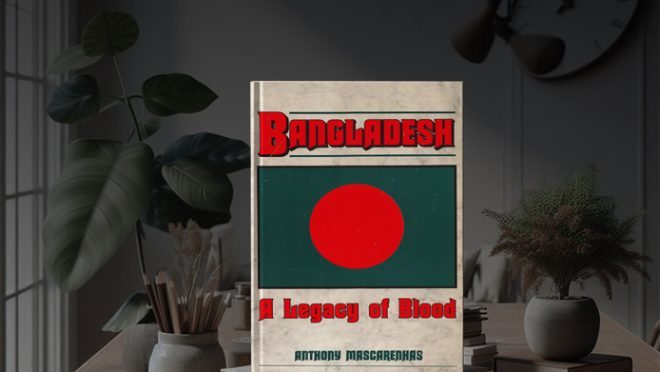A glimpse of history after 1972 through ‘Bangladesh: A legacy of blood’
A glimpse of history after 1972 through ‘Bangladesh: A legacy of blood’

“Bangladesh: A Legacy of Blood”, authored by Anthony Mascarenhas, highlights the timeline from Bangabandhu’s rule in 1972 to the killing of President Ziaur Rahman in 1981. The book is a collection of historical events and sentiments which led to repetitive regime changes, murders, insurrections and more within this eleven-year period.
The author aims to write a historical memoir in which the irresponsible and often selfish nature of the elites and the ruling class of Bangladesh is portrayed in a dark but factual manner.
The author in most cases cited his own interviews with the historical figures in question, and pulled references from international newspapers to give the reader a sense of the reality of the situation at that time.
This book will be quite an eye-opener for the Generation Zoomer, in short, Gen-Z. If you are like me, brought up in an education system where a large chunk of the history from 1972 onwards were never discussed, then you might feel a certain shock to learn some of the revelations.
It depicts a realistic sense of the newly formed country suffering from famine and lack of economic strength. The situation was so dire that the administration had no control of the distribution of resources coming from abroad.
You would encounter recorded texts from the father of the nation, Sheikh Mujibur Rahman, desperately trying to maintain order but in some cases failing to correct his own party’s mistakes and somewhat ignoring the injustices his party is involved in.
There are some harsh realities you may have to confront yourself with, because the picture shown to you in your history textbooks could not be further from reality.
From the officers involved in the killing of Bangabandhu on 15th August, to them taking power and not focusing on fixing the issues of the country, you will feel a wave of disappointment because of the selfish nature of the leaders at that time.
Resentment and a lack of trust are the centrepiece of this book. The book is blunt, direct and somewhat critical of those moments and of every individual from every side which is a good argument for those who may find this book very credible.
The critiques of the depiction of the history of Bangladesh’s society at that time, are very few. The few criticisms that arise are from a particular side of the political spectrum of the country who view the depiction of the father of the nation was not done fairly.
This is understandable as there is very little love or affection shown to any individual involved at that time. Other than this, this book shares quite rare air among the books that show the most honest depictions of historical moments.
Overall, if you consider yourself an optimist, you may find it very heartbreaking to learn about the selfishness, the betrayals, and the shortsightedness of your own leaders, many of whom fought valiantly for the independence of this nation.
But it is still a masterpiece which needs to be read even if done so solely for educational purposes. Especially for the times we are going through right now in history.


